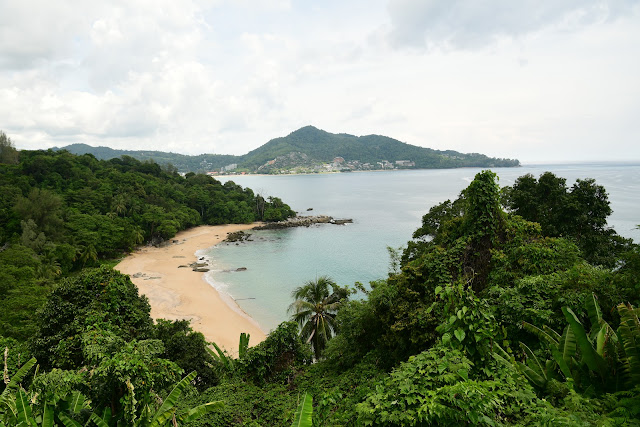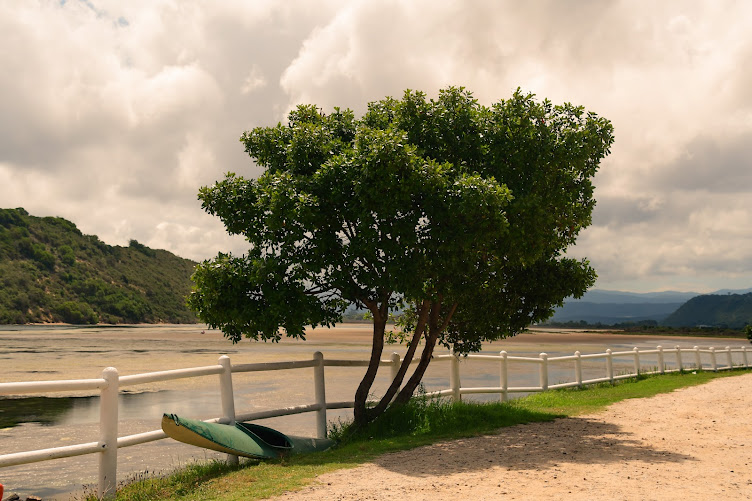This post is shared as Peter McNulty was our B&B Insurance Broker for many, many years before he retired. It's an inspirational story of how to truly enjoy your retirement!!
 |
| Peter and Colleen McNulty - Journey's End Cape Town |
Dreaming
of exploring Africa by bicycle? Learn what it takes from the retired couple who
tackled two continents on two wheels.
Retirement can
either be a time to slow down or if you’re anything like the McNultys, a new
era of adventure and discovery. Rather than sit at home and let the years slip
by, Knysna-based couple Peter and Colleen bought one-way tickets to Amsterdam
in 2017, hopped aboard a pair of Koga bikes and started the long ride home. For
a year and a half, they pedalled through 20 countries (12 in Africa), covering
20,783km in total. They embraced each trip across the border as a fresh
opportunity to savour new experiences, form connections and make lasting
memories.
This inspiring
couple reveals the joys and challenges of cycle tours, what preparation entails
and why you shouldn’t believe everything you hear on the news.
The couple’s route from Amsterdam
to Cape Town. Their tour took them through 20 countries – 8 in Europe and 12 in
Africa. Pictures by the McNultys.
1. Why did you choose to cycle the continent?
Peter: It all goes
back to 1988 when I was living in the UK. I was planning my return to South
Africa and decided that I wanted to cycle back. I asked my brother to come with
me, but he had just met a lady. His options were to either join me for a
year-and-a-half or head back to Australia and ask for her hand in marriage. He
decided that she’s far better looking than I am, so he went back, and I shelved
the idea. I didn’t have the confidence at that stage to do it on my own. Then,
about five years ago, I said to Colleen, “If I don’t do it now, I never will.”
It had always been a big dream and I didn’t want to be on my death bed
wondering what it would have been like.
Colleen: When he told
me “I want to ride from Amsterdam to Cape
Town and I’d like you to come with”, my initial reaction was to
say, “You can send me a postcard”. It took about 18 months before I said yes! I
told him that there would be a few provisions: as little gravel as possible and
we go at my pace. And he met those criteria! I also realised that if I didn’t
go with, Peter would come back with these amazing stories and I wouldn’t be
able to relate to them. That was the deciding factor.
Peter and Colleen pause to
appreciate the views at Victoria Falls.
2. What were the main challenges you faced?
Peter: There really
weren’t that many challenges. I got malaria in Malawi and even
that wasn’t a challenge because it was diagnosed very early. There’s always a
positive side to everything and, in this case, it was the timing. I got sick
just as the Fifa World Cup started, so I had 11 rest days of watching football,
drinking beer and getting spoiled! In general, the trip went a lot smoother
than anticipated. We had people stop us wanting to know what two silly old
buggers were doing on bicycles riding through Africa, and they would always
help out and point us in the right direction.
Colleen: Finding quality
food was difficult. Although beef was available further south in Africa,
quality meat and vegetables were scarce. Ethiopia was
also a struggle because kids shouted at us, threw stones and demanded money.
This would probably have been different if we had been in a car. That said,
it’s a really beautiful country and we never felt threatened.
3. What does it take to cycle the continent?
Peter: We did very
little as far as planning goes. We knew that we wanted to depart from Cairo in autumn
and in what direction we were headed, but that was about it. We felt that if we
planned too much we might become fearful and give up. So, we just winged a lot
of it! We had panniers on our bikes for transporting luggage and I carried a
rack pack which carried our tent and other stuff. My bike averaged about 55kg
including luggage and Colleen’s was about 45kg. As for bike maintenance, we did
a little ourselves but not much. There’s always someone under a tree somewhere
ready to sort you out.
Peter caught in the middle of a
sandstorm in Sudan. He remembers it as “a crazy but memorable day”.
4. What do you know now about overlanding in Africa that you wish you
had known before?
Peter: The border
posts were my biggest fear and they turned out to be an absolute breeze. We
were welcomed! At one border post in Chirundu,
Zimbabwe, they closed the visa office and told the people waiting that they
would be back soon. They wanted to get pictures with us, their friends. And so,
we went outside with all the officials. I wish we had known that crossing the
border wouldn’t be as daunting as we thought it would be.
Colleen: It was so easy
because we never had to queue. Cars and trucks were waiting to go through the
border posts, and we would just zig-zag through, go right to the front, park
our bikes and get our passports stamped.
5. Do you have a stand-out moment or story that you can share with us?
Colleen: When we were
in Cairo, Peter was in contact with another cyclist who invited us to go dune
surfing in 4x4s with friends of his. We did that over a weekend and it was
absolutely amazing! In the white desert in Egypt, the stone formations are
exquisite. That was really outstanding.
Peter: For me, it
was an encounter we had cycling in the Zambezi
National Park, Zimbabwe. We were coming down a hill into a dry
riverbed and Colleen said we should look around because we were in elephant
country. Ten seconds later, there was a huge rustle and a herd of elephants in
the trees behind us took off. They heard us and got as much of a fright as we
did!
The beautiful morning the pair
left their beachside home of seven weeks in Jambiani, Zanzibar. It was here
that they celebrated their 20th wedding anniversary.
6. How did T4A’s navigation products help you on your trip?
Peter: Tracks4Africa
made sure we never got lost! When we weren’t quite sure of routes or wanted to
find things to see and do, we just had a look at our T4A GPS
maps. That was one thing we could always rely on. We’ve got an
updated version now that we’ll use on our upcoming trip.
7. What advice do you have for someone who plans to cycle across Africa
for the first time?
Peter: Don’t be
scared! Go with the flow. In the months before you leave, stop reading and
watching the news. Ignore everything that people say – it’s sensationalism.
Africa is a wonderful continent. Explore and embrace it!
Colleen: And respect
the cultures. For example, in Muslim countries, I always wore a t-shirt with
sleeves and long baggy pants to make sure that I fit in with their culture and
way of life.
Colleen interacts with locals
outside a typical tea shop in southern Malawi.
8. In what ways did this trip change your lives?
Peter: Personally,
it has made me more accepting of people and a lot more patient. Because you’ve
got to be patient in Africa. Everything moves as fast as people want it to
move, so you just hang around and wait. And I think I’m still like that.
9. You’re about to embark on a similar, albeit shorter journey, this
time in your Toyota Hilux. What do you expect will be the main differences
between this trip and the first?
Colleen: A soft seat!
And no more bicycle pimples, they’re eina! We’ve got a fridge in our Hilux so
this time we will have cold water. It’s tough riding through Africa with
temperatures reaching the mid-forties and then drinking warm water; it just
doesn’t quench your thirst. So, having cold water is going to be a luxury.
Plus, driving longer distances means we will get to proper supermarkets faster.
Being in a bakkie will allow us to wild camp more often as we are able to drive
further off the road, have a rooftop tent and enjoy the open spaces. And we’re
also really looking forward to catching up with all the people we met last
time.
The McNultys cycle into the
V&A Waterfront in Cape Town on 9 December 2018, marking the end of their
18-month expedition through Africa.
 | | |
The Bikes - Peter & Colleen McNulty
|
For Accommodation Cape Town, South Africa



















































































